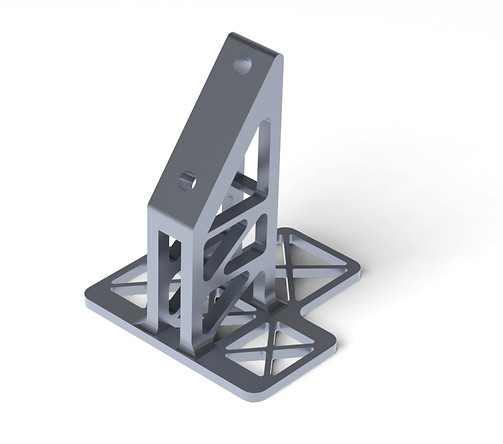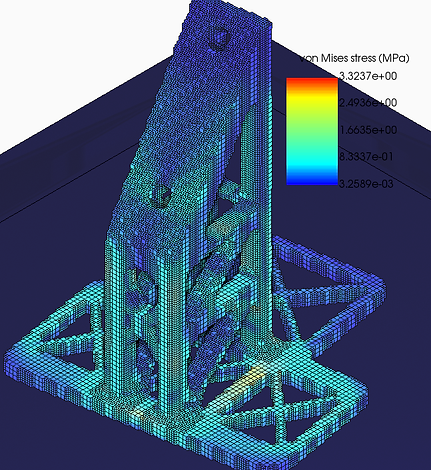Gordon Robertson
The Project
This was a project for my metals AM lab course to design a part for an EOS M290 with the following constraints
-
It has to take advantage of the features of the M290
-
It should be better to 3D print than manufacture traditionally
-
All the steps up until the files are sent to the EOS should be completed, including verifying the print will succeed.

The Part

We chose to redesign the steering upright for a buggy. The original part suffered from a few considerable drawbacks.
-
It was designed to be manufactured by students in a machine shop
-
It is over 20 pieces
-
It was exceedingly heavy
-
It took two weeks to make one
Since only 1-2 of these are needed, it was an optimal part for AM

I worked to consolidate the many parts into one
reduce the excessive thickness in some areas
and and fillets and trusses as lightweight support.
Since the EOS M290 could print AlSi10Mg, which is strong and lightweight,
we opted to use that as the material.
This led to a 37% weight reduction and a quadrupled FOS.
When coupled with the high precision of the EOS, the new part was faster to make, stronger, and would perform better. Given how important lightweight designs are for buggy, this was a huge improvement on the existing part.
Simulation and Testing

Performance Modeling
FBD of the forces on a buggy

Buckling Simulation

Stress and Deformation

The supports were generated using the Materialize Magics software
The interlayer temperature was simulated using Netfabb.
Ansys was used to verify the Netfabb simulation and simulate the deformation due to thermal expansion and stress.

Thermal Simualtion

Post-Processing

To finalize the project, we devised a plan on post-processing the part
-
Heat treat it to minimize the internal stresses characteristic of EOS parts
-
Use a wire EDM Machine to remove the supports
-
Shot peen the part for better surface finish
-
Finish it with sandpaper for a good polish
-
Section it in four areas to analyze the micro-structure and make sure the properties are not too different across the part.